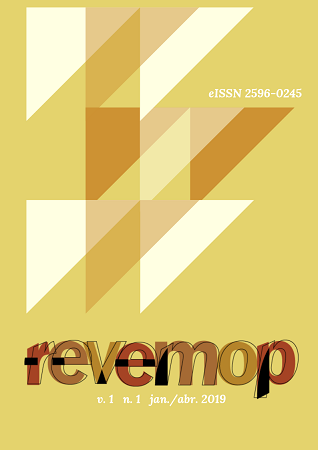Raciocínio visuoespacial: uma comparação entre a construção de um tambor de mão nativo americano e a geometria cirúrgica
Abstract
Este artigo centra-se na construção de um tambor de mão por um fabricante de tambor nativo americano e na construção de uma anastomose por um cirurgião cardiovascular torácico. Nenhuma das atividades ocorrerram com instruções ou ilustrações escritas. Cada construção ocorreu através da sua capacidade de mover imagens e procedimentos mentais na ponta dos dedos com a utilização do raciocínio visuoespacial (Owens, 2015). Para o fabricante do tambor, o aprendizado ocorreu por meio da orientação, da observação e da prática. Cada um deles, o fabricante do tambor e o cirurgião, desenvolveu ricas habilidades de raciocínio espacial baseadas em relacionamentos. Para o fabricante de tambor, os relacionamentos têm a ver com a geometria do tambor e os seus componentes, assim como as relações de geometria cirúrgica existem na sala de operação. Para a resistência do tambor, as tensões são sentidas com a ponta dos dedos, a mesma experiência do cirurgião. Paralelos são destacados entre essas atividades aparentemente não relacionadas com a discussão de possíveis implicações para a Educação Matemática.
Downloads
References
ASCHER, Marcia; D'AMBROSIO, Ubiratan. Ethnomathematics: a dialogue. For the Learning of Mathematics, v. 14, n. 2, p. 36-43, jun. 1994.
BASSANEZI, Rodney Carlos. Modelling as a teaching-learning strategy. For the Learning of Mathematics, v. 14, n. 2, p. 31-35, jun. 1994.
BISHOP, Alan John. Cultural conflicts in Mathematics Education: developing a research agenda. For the Learning of Mathematics, v. 14, n. 2, p. 15-18, jun. 1994.
BISHOP, Alan John. Mathematical enculturation: a cultural perspective on Mathematics Education. Dordrecht: Kluwer Academic Publishers, 1991.
CAJETE, Gregory A. The Native American learner and bicultural science education. In: SWISHER, Karen Gayton; TIPPECONIC, John W. (Ed.). Next steps: research and practice to advance Indian education. Huntington, WV: Chapman Printing Co., 1999, p. 134-160;
D'AMBROSIO, Ubiratan. Ethnomathematics and its place in the history and pedagogy of Mathematics. For the Learning of Mathematics, v. 5, n. 1, p. 44-48, feb. 1985.
DAVISON, David M. Teaching mathematics to American Indian students: a cultural approach. In: HANKES, Judith Elaine; FAST, Gerald R. (Ed.). Changing the faces of Mathematics: perspectives on indigenous people of North America. Reston: NCTM, 2002, p. 19-24.
GILSDORF, Thomas E. Introduction to cultural mathematics: with case studies in the Otomies and Incas. Hoboken: John Wiley & Sons Inc., 2012.
KATZ, Victor J. Ethnomathematics in the classroom. For the Learning of Mathematics, v. 14, n. 2, p. 26-30, jun. 1994.
KHONSARI, Siavosh; SINTEK, Colleen Flint. Cardiac surgery: safeguards and pitfalls in operative techniques. Rockville: Aspen Publishers, 1988.
LAVE, Jean; WENGER, Etienne. Situated learning: legitimate peripheral participation. Cambridge: Cambridge University Press, 1991.
OWENS, Kay. Visuospatial reasoning: an ecocultural perspective for science, geometry, and measurement education. Switzerland: Springer International Publishing, 2015.
PIKE, Kenneth. L. Language in relation to a unified theory of the structure of human behavior. The Hague: Mouton, 1967.
ROSA, Milton; OREY, Daniel Clark. Ethnomodelling: exploring glocalization in the contexts of local (emic) and global (etic) knowledges. RIPEM, v. 6, n. 1, p. 196-218, 2016.
SHOCKEY, Tod L. Left Ventricle Reduction through an Ethnomathematics Lens. For the Learning of Mathematics, v. 26, n. 1, p. 2-6, mar. 2006.
SHOCKEY, Tod L. The mathematical practices of a group of thoracic cardiovascular surgeons. 1999. Thesis (Doctoral in Education). Curry School of Education and Human Development. University of Virginia. Charlottesville.
ZASLAVSKY, Claudia. "Africa Counts" and ethnomathematics. For the Learning of Mathematics, v. 14, n. 2, p. 3-8, jun. 1994.





























